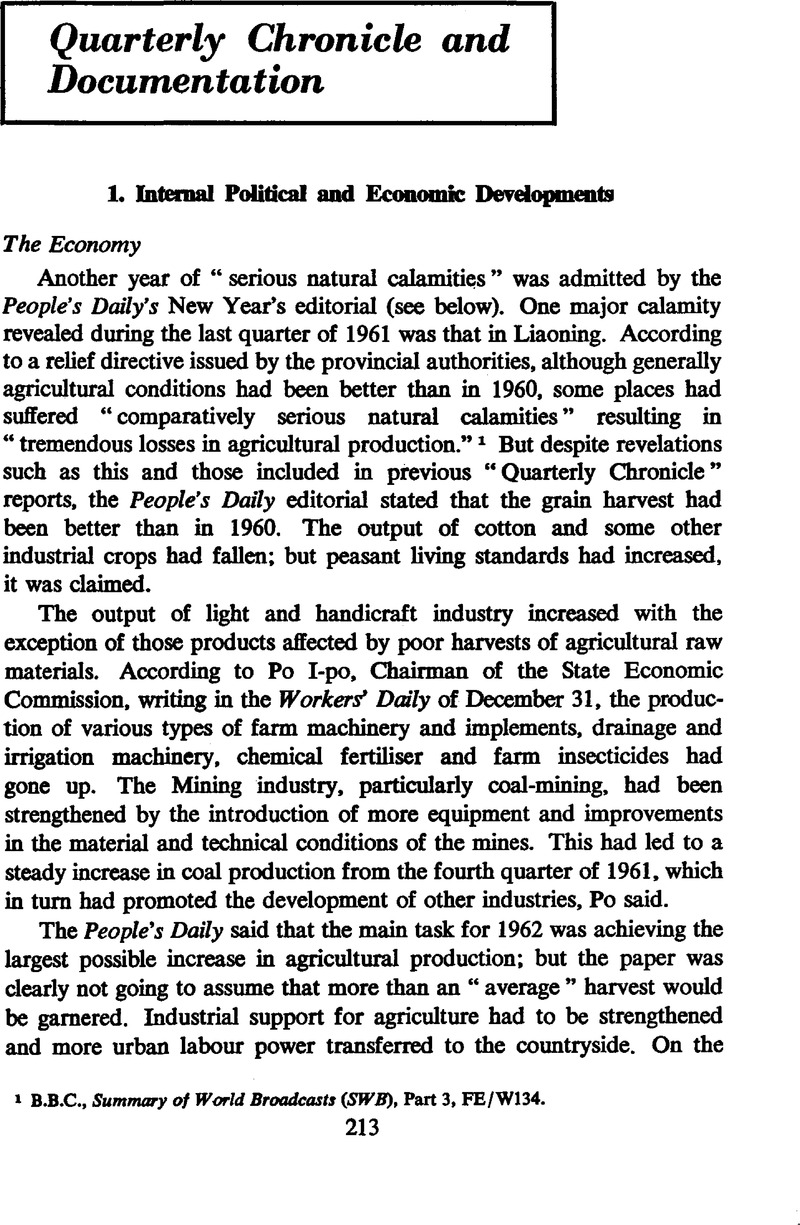No CrossRef data available.
Article contents
Quarterly Chronicle and Documentation
Published online by Cambridge University Press: 17 February 2009
Abstract

- Type
- Quarterly Chronicle and Documentation
- Information
- Copyright
- Copyright © The China Quarterly 1962
References
1 B.B.C., Summary of World Broadcasts (SWB), Part 3, FE/W134.Google Scholar
2 NCNA reported in SWB, Part 3, FE/793.
3 The “four goods” are: good political and ideological work, good “three-eight” working style, good military training and good living arrangements. The “three-eight” working style refers to the “three pointers”: “hold firmly to the correct political direction, maintain an asiduous and simple working style and be flexible and mobile in tactics.” The “eight” refers to eight Chinese characters which mean “be united, alert, earnest and lively.” Much of Chinese Communist political exhortation is couched in similar terms.
4 All these regulations are outlined in a NCNA report carried in SWB, Part 3, FE/805.
5 SWB, Part 3, FE/793.
6 See “An Intellectual Weed in the Socialist Garden: The Case of Ch'ien Tuan-sheng” by Johnson, Chalmers A. in The China QuarterlyGoogle Scholar, No. 6.
7 People's Daily editorial, 12 7, 1961.Google Scholar
8 Text in Peking Review No. 44, 1961.Google Scholar
9 Peking Review No. 44, 1961.Google Scholar
10 Peking Reivew No. 50, 1961Google Scholar, contains the texts of the notes and the statement as well as the people's Daily editorial of Dec. 7.
11 Zagoria, Donald S., “Khrushchev's attack on Albania and Sino-Soviet Relations,” The China Quarterly No. 8.Google Scholar
12 Text in Peking Review No. 52, 1961.Google Scholar




